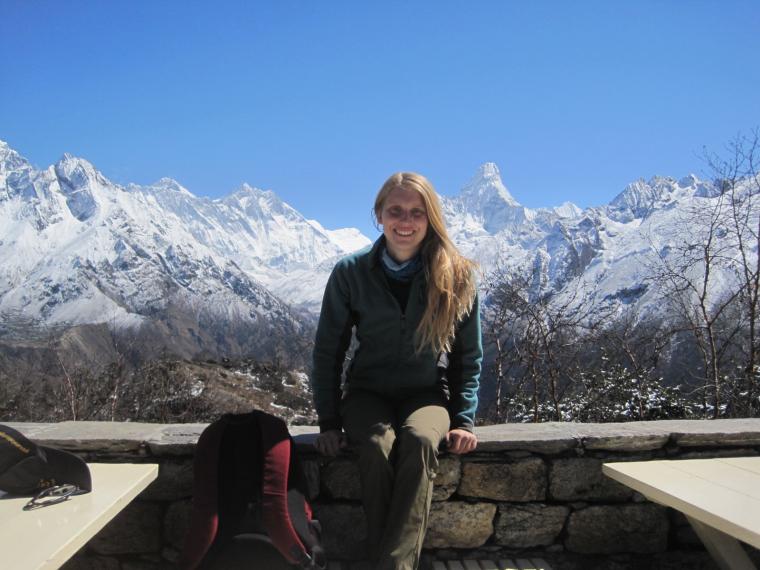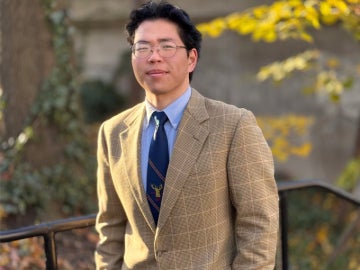Mapping to Aid Relief in Nepal
September 28, 2015
Kasey Cheydleur

Elizabeth Gilmour ’13 poses while hiking Mt. Everest base camp.
Photo credit: Elizabeth Gilmour
Elizabeth Gilmour ’13 was visiting Nepal before beginning an intended graduate program in seismology and earthquake engineering when the devastating April 2015 earthquake struck. Instead of leaving, Gilmour changed her plans and decided to stay and help in any way she could.
“Most tourists were evacuating, but I couldn't imagine just leaving” says Gilmour, who majored in physics. “I had loved traveling there, and I wanted to find a way to help with the recovery efforts.”
When the earthquake struck, Gilmour was far from the destruction in Kathmandu, and she waited to return until the immediate rescue and recovery efforts were finished. She then searched for ways to get involved with the long-term recovery effort.
At first, she built bamboo houses with the Association for Youth Organizations in Nepal (AYON), and while she says the work was rewarding, she soon found a better avenue for her talents at Kathmandu Living Labs (KLL). KLL uses open-source, collaborative mapping to help earthquake relief efforts by providing organizations like the Red Cross up-to-date maps of roadblocks, health centers, and displaced people. Using geographic information system (GIS) skills she learned while at Oberlin, Gilmour’s project has focused on mapping landslide hazards in part of the Dhading district. She works with a geologist from Tribhuvan University to make maps comparing slope steepness, ground cover, locations of existing ground rupture and landslides, and the locations of settlements. The geologist then uses those maps to make suggestions for evacuation, resettlement, or skipping rice planting during the rainy season when the risk of landslides is highest.
A native of Williamsburg, Virginia, Gilmour says her time at Oberlin has helped her be more conscientious in her work. “Being at Oberlin taught me about the importance of not only trying to help others, but also the importance of doing so thoughtfully, respecting cultures and differences. I try to find ways in which I can use my skills to complement and assist Nepalese organizations.”
Gilmour says her time in Nepal has changed her future plans. Instead of studying earthquake engineering, she is interested in pursuing a career using GIS for natural disaster preparedness and discovery.
You may also like…
Learning by Teaching: Oberlin Students Share Global Music with Young Learners
College and Conservatory students in PACE 103 prepare local children for an immersive community concert at Oberlin.
Nuiko Wadden ’02 Joins Oberlin Conservatory Faculty as Assistant Professor of Harp
The versatile musician brings extensive opera, orchestral, and contemporary music experience to her role
Leo Hidy ’23 Earns 2026 Marshall Scholarship
Leo Hidy ’23, a comparative American studies major who also studied business and economics while at Oberlin, has received a 2026 Marshall Scholarship that will fund two years of graduate study in the UK.


